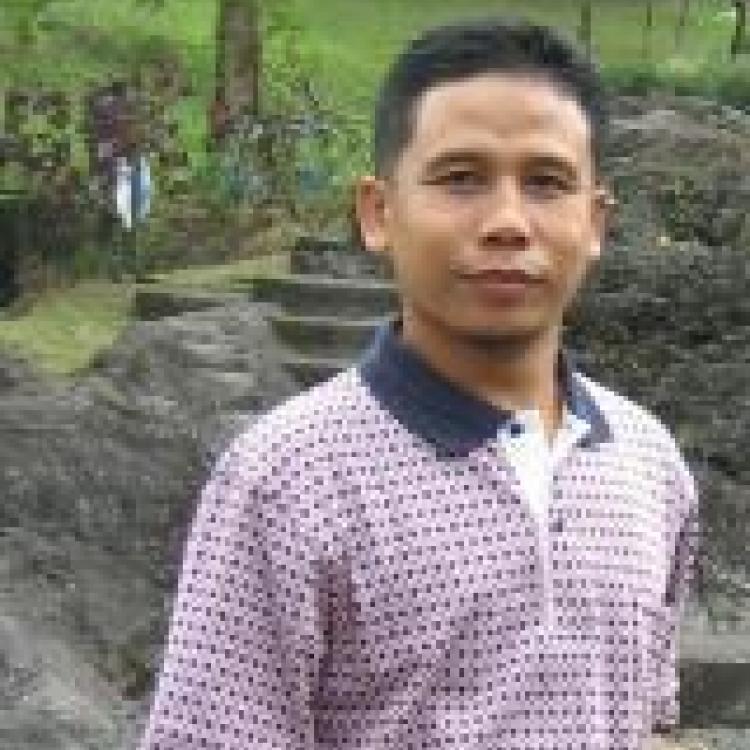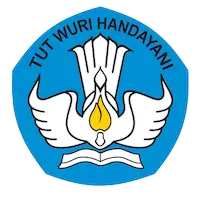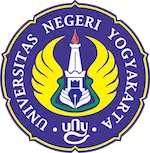INTRODUCTION
Indonesia is a country that has a very high potential of eruption disaster. Indonesia has the highest number of active volcanoes in the world with around 129 volcanoes (17% of the volcano in the world). These conditions caused Indonesia become one of the areas with the highest potential for volcanic disaster in the world (Sudibyakto, 1997; Van Padang, 1983; Verstappen, 2013). Volcano has great benefits for life and the dynamics of the natural environment. On the other hand, volcano also has considerable potential for devastating natural disasters. Meanwhile, the population growth and their socio-economic activities have long penetrated to the dangerous areas (Sutikno et.al, 2007).
The potential volcanic disasters in Indonesia are not spread evenly across the region, but concentrated in the volcanic areas. Among the volcanic regions, Java Island show the highest number compared to other regions in reference to the history of eruption that had been experienced 470 times or 47% of total eruptions happened in Indonesia with 23 volcanoes of type-A. In Java Island, there is Merapi Volcano that is very active and known as one of the most active volcanoes during holocene.
Moreover, Merapi Volcano continues to experience regular eruptions with more than 80 times of eruption since 1006 until present time. With regard to this, Merapi is often called “a never sleep volcano”. The activities of Merapi Volcano are characterized by looping between explosive and effusive activities. Explosive activities are in the form of pyroclastic flows, while effusive activities are in the form of lava flows, and the forming of lava dome that produce nuee ardente d’avalanche Merapi type. All this time, the eruption of Merapi Volcano tends to leads to western or southwestern flank (Andreastuti et.al 2006; Sudradjat et.al, 2010; Putra et.al, 2011; Sudibyakto, 2011a).
The last eruption disaster of Merapi Volcano occurred from October to November 2010, with 150 million meter square of eruption materials and 3.56 trillion rupiahs losses. The 2010 eruption is the first big eruption after 80 years since 1930-1931 with direction of pyroclastic flows towards the southern flank (Arif, 2013; BNPB, 2011; Subandriyo, 2011). Although there are a lot of losses and damages in housing, infrastructure, economic, and social, the community keeps reoccupying the danger areas after 2010 eruption regardless of the potential disaster risk in the future. In fact, the average population growth in the eruption area reaches 2.8%, exceeding the average of the national population growth or 2.5% (Sudibyakto, 2011b).
After 2010 eruption, morphological changes are estimated to occur in some landform on the western flank of Merapi Volcano. These morphological changes, although occurred in a narrow region, can influence the changes of hazard distribution when the eruption occurred again in the future. Changes in the distribution of the dangers that have not been identified and the increasing number of people that occupy the danger areas cause the disaster risk in the future remaining high. In this regard, it is necessary to rearrange an analysis of the Merapi Volcano eruption hazard particularly on the western flank with reference to the new database of morphological condition of Merapi Volcano after the 2010 eruption. Renewal on information of hazard and disaster risk is very important to support mitigation and disaster risk reduction in the future.
Disaster risk reduction in Indonesia has been mandated through the Law No.24 year 2007 about disaster management. As an effort to reduce the risk of disaster, there are disaster management cycles. Update information about eruption hazard give very important donation on the disaster management cycles, particularly at pre-disaster phase which includes prevention, mitigation, and preparedness. Update information of eruption hazard is also expected to increase the coping capacity of communities. Therefore, the risk of disaster remains low although many people occupy eruption hazard areas so that disaster losses can be reduced and harmony life is created.
METHOD
This research employs an explorative-survey method with geographical approach namely regional complex approach. The population in this research includes all terrains in the western flank of Merapi Volcano. The samples were taken by purposive sampling technique that is in every terrain unit. Determination of terrain units as a sampling unit is because terrain condition as a physical unity surface are factors that affect the level and distribution of the eruption hazard of Merapi Volcano.
The data consist of primary and secondary data. Primary data are the result of field measurements and observations about the factors that affect the level of hazard eruption. Secondary data are rainfall data in research area, geological map, Peta Rupabumi Indonesia (Indonesian topographical map), and the data from previous research relevant to this study. Types and methods of collecting the data are presented in table 1 below.
Table 1. Types and Methods of Data Collection
|
Data types |
Data collection techniques |
Data source/ instrument of measurements |
|
Landform |
Observation |
GPS, clinometer, geological compass, observation sheet |
|
remote sensing image interpretation |
Landsat image |
|
|
Slope |
Observation |
GPS, clinometer, digital theodolit, geological compass, observation sheet |
|
remote sensing image interpretation |
DEM STRM data |
|
|
Relief unit |
Observation |
GPS, clinometer, digital theodolit, geological compass, observation sheet |
|
Distance from crater |
remote sensing image interpretation and geographic information systems analysis |
Peta Rupabumi Indonesia (topographical map) Landsat image |
|
Distance from main river channel |
remote sensing image interpretation and geographic information systems analysis |
Peta Rupabumi Indonesia (topographical map) Landsat image |
|
River channel density |
geographic information systems analysis |
Peta Rupabumi Indonesia (topographical map) |
|
Landuse |
Observation |
Observation sheet |
|
geographic information systems analysis |
Peta Rupabumi Indonesia (topographical map) |
|
|
Vegetation density |
Observation |
Observation sheet |
|
remote sensing image interpretation |
Quickbird image |
|
|
Volcanic facies |
Observation |
Observation sheet |
|
Documentation |
Marfai et. al (2012), Andreastutidkk (2006), Mulyaningsih et. al (2006) |
Data analysis in this research employs geographic information systems analyzed through buffering, scoring analysis, and descriptive analysis. Scoring is performed to assess the influences of the variables of eruption hazard namely landform, slope, relief unit, distance from crater, distance from main river channel, land use, vegetation density, river channel density, and volcanic facies.
In the scoring process, each variable was given weight factor based on their effect on the level of eruption hazard. If their influence is bigger, weight factor will also be bigger. Weight factors for each variable are: relief unit (20), slope (15), distance from crater (15), landform (10), distance from main river channel (10), land use (10), river channel density (10), vegetation density (5), and volcanic facies (5). Descriptive analysis used to clarify the discussion and support the scoring analysis.
RESULTS AND DISCUSSION
Research Area
Research areas consist of the western slope of Merapi Volcano, which located at 415500 to 439000 meters east, and 9149900 to 9167300 meters north in UTM coordinate zona 49 M. Total area 187.75 km2. These areas are located in Magelang Regency and Boyolali Regency, Central Java Province (Figure 1). Geological condition in these areas consist of young volcanic deposit of Merapi Volcano, old volcanic deposit of Merapi Volcano, lava dome and lava flow, and avalanche deposit from nuees ardentes. Moreover, landform in research area consist of crater, lahar field, lava field, volcanic cone, volcanic slope, volcanic foot, volcanic foot plain, and isolated hill.
The research area has a climate type of C based on climate classification proposed by Schmidt-Ferguson. In the perspective of hydrology, there are rivers that flow radially in the research area including the region of Progo Watersheds. Groundwater condition is characterized by areas with fine aquifers. Sutikno et al (2007) explains that there are many springs spread from volcanic slope unit to fluvio volcanic plain by following the contour pattern on the western slopes of Merapi Volcano. This pattern still becomes evidence as a spring belts.
Hazard Level and Hazard Distribution at Western Flank of Merapi Volcano After 2010 Eruption
The identification of eruption hazard level and their distribution on western flank of Merapi Volcano was performed with geomorphology approach. This is due to a consideration that the type and distribution of hazard from volcanic activity of Merapi Volcano is closely related to the geomorphological condition (Sutikno et al, 2007). Each geomorphological unit has different potential hazard. In the process of hazard analysis with geomorphological approach, research area was first distinguished in some terrain units based on similarity of terrain.
Based on the result of overlay from geomorphological map, slope map, and land use map it was obtained 80 terrain units. The results of analysis show that there are hazard variations levels from class II (low hazard level) to class V (high hazard level). The medium hazard covering most of the terrain unit, while the low hazard level covers the most extensive territory on research area.
The very high level is located around the volcano crater which is the center of activity of Merapi Volcano. This terrain unit has very high hazard level because its position is at the central facies thus allowing for the existence of all kinds of hazard posed during the eruption. The terrain unit with a very high hazard level is shown in Figure 2 below.
A high eruption hazard level is found in landform volcanic cone to volcanic slope that has a very steep slope. High hazard level is influenced by landform location that is close to volcanic crater, steep slope, and land cover in the form of open land and shrubs. This area included in piroximal facies so it can be affected by pyroclastic flows, lava flows, pyroclastic fall, and pyroclastic surge. This region belongs to the category of high hazard level because many types of hazards threat it.
The medium level of eruption hazard covers most of the terrain units in the study area. However, this hazard level does not dominate the research area because the area of terrain unit is relatively narrow. The factors that affect the medium eruption hazard level include a considerable distance from the crater or main river channel, relatively gentle slope, and relief unit undulating-rolling. Types of hazards that threat the region with medium level eruption hazard consist of lava flows, pyroclastic and lava.
Low hazard level shows the most extensive distribution in the study area. Although the number of terrain units that is included in this danger level is relatively few, the terrain unit can cover a wide area because the terrain unit has a large enough area then. Areas with low danger level is spread on the lower slopes of volcano, volcanic foot, to volcanic foot plain. The factors that influence low hazard level consist of distance from the crater considerable, flat to gently slope, and relief flat to undulating. The type of danger is lava flow. Low hazard level is characterized by the type of distal facies material as a result of the deposition of lava material. Relatively little hazard type causes this region having a low danger level.
The distribution of the eruption hazard level of Merapi Volcano follows the pattern that is influenced by landform, slope, relief unit, and distance from the crater as hazard source. The distance from the river flow does not give significant effect. This is because the analysis used is a generalization of condition on a terrain unit. However, the main river channel and new grooves tipped around the crater also give local variation on each terrain unit. Therefore, some parts of river banks remain at high hazard level even though the average terrain units are at middle or low danger level. This is caused by the presence of hazards from eruption material through the river channel. In disaster risk reduction efforts, the area around main river channel remains a high hazard level.
Area with high hazard level is an area next to hazard source especially on landform unit: crater, volcanic cone, and area around main river banks. The further of the distance from crater and the main river banks, the hazard level will decrease. In relation to the geomorphological conditions, area with high level hazard is area which genetically formed from the deposition of some material type which include lava, pyroclastic, lahar, or fall material. Besides, the factor of the slope and relief units also determine the hazard level in a particular place. Thus, the distribution of the eruption hazard level of Merapi Volcano is influenced by the distance from the hazard source that determines the frequency for exposing to the hazard and variations of the various types of hazards that pose a threat.
In general, the distribution of the eruption hazard level has a gradation pattern away from the crater as the central point of eruption. However, there are spatial variations between terrain units on a local scale. For example on the landform units slopes of volcano, lithology old volcanic deposit of Merapi volcano, and slope class steep, it is generally found a high eruption hazard level namely on landform with land use shrub, vacant land, and moor. However, in the same terrain unit with land use mixed farms, it is found medium eruption hazard level. This difference is affected by variation of terrain condition on each terrain units. In the analysis of disaster risks variations that appear on a small scale like this is very important to note. Thus, information delivery of the spatial distribution of Merapi Volcano eruption hazard level is not enough to present the depictions in general but it should be displayed in a large-scale map with exposure to more detailed information.
Discussion
In reference to the research findings, most of the factors that influence the level of eruption hazards consist of landform in relation to the location of the hazard source, steep slope, relief unit mountainous one side, distance from crater, and distance from river channel. Landform factor and distance from crater are related to the type and intensity of the material from the eruption that struck an area. Sagala and Yasaditama (2012) and Andreastuti et al (2006) emphasize that the influence of the distance from the crater will be higher if the location of a region is close to the source of eruption particularly on the morphology of openings crater.
The distance of a terrain towards the center of the eruption that is getting closer has caused this terrain affected by various types of hazard. Further hazard type decreased on terrain that is located far from eruption center. Moreover, the center of eruption hazard type decreases because it depends on the ability to reach that is associated with geomorphic agent as carrier. There are many types of primary and secondary hazards found in Merapi Volcano such as in the form of lava flows, pyroclastic flows, volcanic gas, volcanic ash, lava eruption, and pyroclastic fall (Sutikno et.al, 2007; Sagala and Yasaditama, 2012).
At distance of 1-6 km, a terrain face the danger of lava flows, ash and gas flows, pyroclastic fall material, pyroclastic flows which glides up to a distance of 9 km and lava flows is transported up to a distance of 20 km from eruption center (Verstappen, 2013; Sutikno et.al, 2007; Marfai et.al, 2012; Bronto, 2006). Sutikno et.al (2007) and Borisova et.al (2013) explain that Merapi Volcano has characteristics of viscous magma that is derived from the magma chamber at an intermediate depth that is pushed to top. The characteristics of magma including the assimilation with various rock types in the area around Merapi Volcano give effects on the dynamics process of volcanism that happened such as effect on the eruption that tend to be explosive and produce various types of hazard.
The distance from the river channel determines the eruption hazard level because it functions to transport the material from the eruption. The role of geomorphic agents as a carrier in some hazard types is related to the existence of the river channel, for example pyroclastic flows that can reach a distance of 9 km, and the lava flows that reach a distance of 20 km (Verstappen, 2013; Sutikno et.al., 2007).
Thus, there is a river channel at the area beginning from the crater of Merapi Volcano that has a higher potential hazard. Nugraha et al (2014) and Kumalawati et al (2014), based on their research, shows the effect of distance from the river channel to settlement damage around the river banks at the time of the Merapi Volcano eruption in 2010. The damage occurs due to the distance and height of lava flood sediment especially at the area with slope less than 10 degrees, topographic position index in the form of the valley, plan curvature and profile curvature flat and concave. The factors of morphological conditions determine the level of hazard in micro-scale eruption. Thus the morphological changes that occurred after the 2010 eruption include a crater morphology changes and the formation of new grooves causing eruption hazard level on an area in the micro scale.
CONCLUSION
After the eruption happened in 2010 on the western slopes of Merapi Volcano region, there are four classes of eruption hazard namely class II (low), III (medium), IV (high), and V (very high). Low hazard level covers most of the research areas, the medium hazard level covers most of terrain unit but do not dominate areas, a high hazard level is present in the region next to the volcanic cone, and very high hazard levels are located at the center of volcanic activity.
The terrain characteristic affecting high hazard level is mainly a short distance from the crater and the main river channel and there are new grooves. Moreover, the terrain characteristics causing medium hazard level is generally the distance from the crater and the main river that is close enough, steep slope, unit relief hilly. The characteristics which provide benefits include land use and density of vegetation that can hamper the flow rate of eruption material.
Furthermore, the terrain characteristics that affect low hazard level is mainly a considerable distance from the crater and the main river, and condition of vegetation that is pretty good. To produce more detailed information about disaster management, the findings of the research showing the hazard level of the eruption have to observed and measured in detail and mapped with a larger scale. It is intended to anticipate the spatial variation in local scale that has not appeared, if they are only observed in the general view.
REFERENCES
Andreastuti, S,D., Newhall, C., and Dwiyanto, J (2006) “Menelusuri Kebenaran Letusan Gunung Merapi 1006” Jurnal Geologi Indonesia, Vol. 1, No 4, pp. 201-207.
Borisova, A.Y., Martel, C., Gouy, S., Pratomo, I., Sumarti, S., Toutain, J.P., Bindeman, I.A., Metaxian, J.P., Surono (2013) “Highly Explosive 2010 Merapi Eruption: Evidence for Shallow-Level Crustal Assimilation and Hybrid Fluid” Journal of Volcanology and Geothermal Research. Special Vol. on the 2010 Merapi Eruption Version 1, pp. 1-54
Bronto, S (2006) “Fasies Gunungapi dan Aplikasinya” Jurnal Geologi Indonesia Vol. 1, No 2, pp. 59-71
Kumalawati, R., Sartohadi, J., Kartika, N.Y., Rijal, S.S (2014) “Evaluasi Kerusakan Permukiman akibat Banjir Lahar Pasca Erupsi Gunungapi Merapi 2010 di Kabupaten Magelang” Prosiding Pertemuan Ilmiah Tahunan XVII Ikatan Geograf Indonesia. Yogyakarta 15-17 November 2014.
Marfai, M.A., Cahyadi, A., Hadmoko, D.S., Sekaranom, A.B (2012) “Sejarah Letusan Gunung Merapi Berdasarkan Fasies Gunungapi di Daerah Aliran Sungai Bedog, Daerah Istimewa Yogyakarta” Riset Geologi dan Pertambangan Vol. 22, No 2, pp. 73-79.
Nugraha, H., Hadmoko, D.S., Marfai, M.A., Mutaqin, B.W., Yulianto, F., Susmayadi, I.M., Dipayana, G.A., Khomarudin, M.R (2014) “Karakteristik Geomorfometri Lokasi Luapan Lahar Kali Pabelan, Magelang, Jawa Tengah”. Prosiding Pertemuan Ilmiah Tahunan XVII Ikatan Geograf Indonesia. Yogyakarta 15-17 November 2014.
Padang, M.N. Van (1983) “History of the Volcanology in the former Netherlands East Indies” Scripta Geol Vol. 71, No 1983, pp. 1-81
Putra, T.Y.D., Aditya, T., de Vries, W (2011) “A Local Spatial Data Infrastructure to Support the Merapi Volcanic Risk Management: A Case Study at Sleman Regency, Indonesia” The Indonesian Journal of Geography Vol 43, No. 1, pp. 25-48.
Subandriyo (2011) Sejarah Erupsi Gunung Merapi dan Dampaknya Terhadap Kawasan Borobudur. (electronic book on internet).
Sudibyakto (1997) “Manajemen Bencana Alam dengan Pendekatan Multidisiplin: Studi Kasus Bencana Gunung Merapi” Majalah Geografi Indonesia Vol. 12, No. 22, pp. 31- 41.
Sudibyakto (2011a) “Risiko Bila Merapi Meletus” Manajemen Bencana Indonesia Kemana? Gadjah Mada University Press; Yogyakarta.
Sudibyakto (2011b) “Persepsi Penduduk Merapi” Manajemen Bencana Indonesia Ke mana? Gadjah Mada University Press; Yogyakarta.
Sudradjat, A., Syafei, I., and Paripurno, E.T (2010) “The Characteristics of Lahar in Merapi Volcano, Central Java as the Indicator of the Explosive during Holocene” Jurnal Geologi Indonesia Vol. 6, No. 2. pp. 69-74
Sagala, S.A.H and Yasaditama, H.I (2012) “Analisis Bahaya dan Resiko Bencana Gunungapi Papandayan, Studi Kasus Kecamatan Cisurupan, Kabupaten Garut” Forum Geografi Vol. 26, No. 1, pp. 1-16
Sutikno., Santosa, L.W., Kurniawan, A., Purwanto, T.H. (2007). “Kerajaan Merapi” Sumber- daya Alam dan Daya Dukungnya. Badan Penerbit Fakultas Geografi; Yogyakarta.
Verstappen, H. Th. (2013). Garis Besar Geomorfologi Indonesia. Gadjah Mada University Press; Yogyakarta
Note
Bambang Saeful Hadi, Sriadi Setyawati, and Arif Ashari
Department of Geografic Education, Yogyakarta State University
Presented on 9th PAHMI (International Conference on Malaysia-Indonesia Relation), Ruang Sidang Rektorat, Yogyakarta State University, 16—17 September 2015

 English
English


